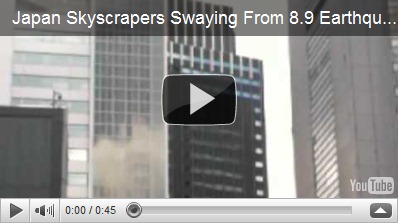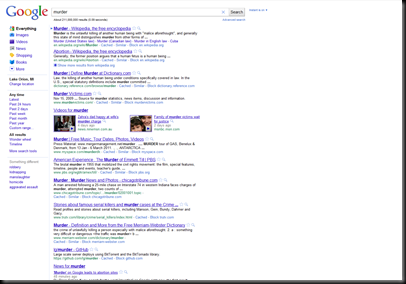Greetings from the interwebs! I am typing this from the on-screen keyboard of my Asus Transformer tablet. Although it's wonderful, I have not received the keyboard addition and it is slow to type out a blog. So, I'll be back next week to start the blog up again. There are a LOT of exciting things happening in the tech work lately and I can't wait to discuss them with all of you!
Normal Tech News
Technology news...for everybody else.
Sunday, June 5, 2011
Tuesday, April 12, 2011
Same Bat-time; same Bat-channel…
CLICK HERE FOR ORIGINAL BLOG POST
There was a time back when I was young (or even four years ago) where people would have to schedule their time and events around television shows and movies that they wished to watch. Kids stayed in on Friday to watch TGIF on ABC or woke up early Saturday for Saturday morning cartoons. Adults made sure to go to dinner before their programs started at 8pm and definitely made it a habit to stay in all night Thursday for NBC’s Must See TV. After you watched your show, you would have to tune in NEXT week at the SAME TIME to view the show again.
Films would air in movie theaters, then be released periodically in a “video rental store.” These movies would usually be watched on Fridays, but parents coming home from work on Friday would make sure to get to the local Blockbuster early before all the copies of the new release were rented. But in order to watch a movie in your home, you either had to purchase it, or drive down to the store and rent the film; then you had a window of two days to watch it.
Sometimes the gods would look favorably down upon humanity and allow people to view them significantly edited on Saturday afternoons or Sunday evening.
The sad thing was, your time was held hostage by shadowy men in corporate citadels.
This was before a revolution of viewer-controlled media. There has been a sudden release these last few years of technology that has allowed the consumer the chance to control when, where and how they watch the television shows and films that they desire.
DVRs allowed people to take back their schedules. You don’t have to be home to watch a television show. You don’t even have to remember to tape the show every week. One setting and the show tapes every time it airs. Missed taping an episode or even want to catch up with a series you started watching halfway through a season, products like Hulu.com, TV.com and others provided consumers the opportunity to further customize their viewing schedule.
With films, initially rental stores extended the time they allowed a film to be released, but there was still the issue of physically driving to the rental store, returning the film and, even then, the desired film didn’t have any copies available. Products like Netflix satisfied the hunger for delivered movies to your door with NO LATE FEES AT ALL. But even with this advancement, consumers wanted instant gratification, so products like Cable Video On Demand and Netflix streaming allowed consumers to view films at any moment they desired, whether day or night.
With the added ability to watch films and television programs on televisions, gaming consoles, computers, tablets and smartphones, consumption of media has never before been easier for the public. We are truly lucky to be living in an era of instant gratification.
Two questions remain, though: with the “have it your way” mindset, are we becoming too ungrateful, and do any other parties benefit from this arrangement outside of the consumer?
My next post will attempt to answer these questions…
Friday, March 11, 2011
The future of Disaster
CLICK HERE TO VIEW ORIGINAL BLOG POST
Last night, my time, around 2 or 3 am, an 8.9 magnitude earthquake hit Japan, which was followed by a tsunami and a dozen or so “aftershocks.” The largest earthquake was the first, but the aftershocks haven’t been small situations, either.
Lucky for the Japanese, the government invested billions of dollars into an early detection and alarm system. You can see, below, how investments in technology probably saved thousands of lives by alerting Japanese citizens moments before the earthquake arrived.
Depending on the distance to the epicenter of the earthquake, the alarm gives the people more or less time to get ready. It could be a 10 second warning or, like yesterday for people in Tokyo, an 80 second warning. This may not seem like much, but it is enough for people to turn off gas lines, pull cars over, get out of elevators, lower construction cranes or stop surgeries that are in progress and create/find cover. These warnings are aired over television and radio stations, but can also be texted to phones, tweeted via Twitter or blasted over internet lines. An example below (notice the amount of time the person has before the earthquake gets going):
The thing about Japanese that is fortunate for them is their preparedness. They have been working on their early warning system for earthquakes and tsunamis for the last ten years and they have spent the last two decades fortifying their skyscrapers with the latest in seismic retrofitting technology. Their buildings can actually sway like palm trees, as you can see in the following video:
The really cool thing about technology is that, although there may not be a long enough connection to get a phone call to a loved one, there may be enough connection to send off a text message, or send a tweet out to one’s friends. This is the sort of thing that is happening more and more around the world as crises occur.
A new happening is the internet’s answer to the “lost persons board” often found in town centers after devastating events. Google has set up a “Crisis Response” where people can post “I am looking for someone” or “I have information about someone.” This is a huge help in these areas for families or friends to search to find loved ones.
Tweets, Facebook groups, and text messaging are also wonderful, quick ways for a person to donate a small amount of money or a rescue or aid organization without the group having to create a television ad or organize extra volunteers for a large amount of incoming calls.
Make SURE that you do not text or allow anyone to have any of your money information until you check the validity of the organization. MSNBC has a great article about WHAT TO THINK ABOUT BEFORE YOU DONATE MONEY.
MSNBC also has some Organizations that are Accepting Donations HERE
Saturday, February 26, 2011
This might get a little complicated…
I’ve been reading about a couple instances in the last week of people “manipulating” the search results of Google to allow their company’s website or client’s website to get a “better” position. I’ve always found these "controversies” humorous, but does it really matter?
You may think that if a website is visited a lot of times, it automatically gets higher on Google results: this would only be correct for 10% of how Google figures it out. A larger weight is given to a website that has a lot of websites connecting to it.
So, in my example from yesterday, it was discovered (before Google corrected the problem) that, when searching for ‘murder’, the Wikipedia page for Abortion was the second result. This suddenly happened because a lot of websites that discuss ‘murder’ or mention ‘murder’ had linked TO that Abortion page, intentionally trying to make that page rise in the results. Many times something like this is done for political reasons.
It’s not enough that a webpage has a lot of traffic and is about a certain murder. Google thinks that, if other websites that are about murder LINK to a certain site, that site has more credibility on the subject.
So, there are some public relations companies and marketing companies that either make thousands of webpages or hire websites to put links to their clients websites. That way, their client-pages have a LOT more sites linking to them, thus increasing their page views.
This happened last month when JCPenny was punished for hiring people to put their links on random webpages. Google found out and decreased their ranking to number 27 in a lot of MAJOR search categories, i.e. clothes, bags, makeup.
Is this really a big deal? It seems like people complaining about nothing. Think about it this way, when you’re searching for shirts or a specific item of clothing, do you click on the 20th result? Usually you click on one of the first 3 results, if you don’t already recognize the name of a major brand.
A company can make tens of millions of dollars more if their name is just a few results higher. And that is why Google tries to be fair and why your search results are a valued commodity.
Friday, February 25, 2011
My next post, in a day or two, is going to be about how Google sorts its search results
CLICK HERE TO SEE ORIGINAL BLOG POST
I noticed this as I typed “murder” into my Google search. Look at result number 2:
I find this interesting/suspicious.
Tip of the Hat to: Cory Doctorow of Boing Boing
Tuesday, February 22, 2011
Update:
I promise a new blog entry later today or tomorrow.
I’m trying to stay on top of my MOTOROLA XOOM news. What I’m hearing is disappointing.
Sunday, February 6, 2011
Great News if You’re Looking to Buy a New HDTV
Alright. I told you I would discuss some fun things to do with burned movies and a house entertainment system, but this topic is actually topical; meaning, the information I give will be of use to you NOW.
It was a sad year for hdtv sales in 2010. Best Buy said their sales of hdtvs dropped this year by 14%. This is GOOD! 70% of households already HAVE an hdtv. But hdtvs have been around long enough that, if you were one of the first to buy, or even if you are still that person that hasn’t broken down yet, the next few months may be PERFECT for you.
Since places like Best Buy usually get their new models into the stores in June, NOW is the time to purchase a television. After the Super Bowl sales, when the stores have the leftover televisions that didn’t sell, is when you can find deals. Just like after Christmas.
I want to make sure that, when you go out to find a television, you don’t go in and get blind-sided by a quick salesman. Here are some things you need to keep in mind:
Type of hdtv: really, there is no debate between plasma and LCD anymore. LCD won. Now, you decide between LCD and LED. They are both considered “LCD” screens, but LED is a different type of lighting. LED delivers better colors and darker blacks, meaning when the screen is black it doesn’t look like someone is shining a light through a black filter; on LED screens, the light actually turns OFF. Because of their better color and black levels, they are usually more expensive.
Refresh Rate: most TVs come in 120hz, which means that the screen “refreshes” the image 120 times per second. Some old screens are 60hz, but many companies stopped making them because they do fidgety things with TV and blu-ray signals. (Ask me if you really want to know the technical reason) If someone says that you should get the 240hz screen because it will be twice as good video quality, tell them that they’re “not talking to an ignoramus. I know that 240hz is just a marketing term that means NOTHING.” Stick with the 120hz.
Smoothing Motion: don’t fall for the “smooth motion” or “super motion” option. Basically, movies and TV shows are filmed at 24 and 30 frames per second, respectively. This means that when you are watching them on a 120hz TV, they are repeating the same movie frame 5 times and every TV frame 4 times every second. That “smoothing motion” takes two frames and figures out what the picture is doing between the two for those extra frames. Basically, it allows your TV to make its own TV show or movie. If you’re someone who believes that a director knows what he is doing, you will respect him enough not to allow your TV to screw with the film or show he has created. PHEW.
Internet connectivity and widgets: you really have total control over this, most of the time. Many televisions now come with application stores where you can add connections to HULU or Netflix or a weather application that tells you local weather. If you don’t want to use them, you don’t have to, but they’re very convenient to watch streaming video on your TV from the internet.
3D technology: as much as I hate this, most of us are going to have to get used to the fact that 3d technology is here, at least for the next few years. Basically, nowadays it’s glove compartments are in your car: not everyone uses them, YOU MIGHT NOT EVEN CARE ABOUT THE FEATURE WHEN YOU SHOP FOR A CAR, but it will be installed in the car anyway. It doesn’t add anything to the price of the hdtv, since all the new TVs come with it anyway. So, it will be an option that you have available to you, if you want, but if you never use it, you probably will forget that it exists. So stop trying to find that hdtv that doesn’t have it.
TV size: the most basic advice I can give you is that, for most people, a 46” TV is the perfect size. As you look at the table below, know that I sit about 10’ or 11’ away from my 46” screen and think it look magnificent. These viewing distances are mostly just to make sure that, if you’re at the close end of the spectrum, you can’t see pixels. Because people will be able to see pixels on an an hdtv that is 100’ tall if they are close enough.
| Screen | Viewing Distance Range |
| 26” | 3.25-5.5 feet |
| 32” | 4.0-6.66 feet |
| 37” | 4.63-7.71 feet |
| 40” | 5.0-8.33 feet |
| 46” | 5.75-9.5 feet |
| 52” | 6.5-10.8 feet |
| 58” | 7.25-12 feet |
| 65” | 8.13-13.5 feet |
| 70” | 8.75-14.75 feet |
Those are the basic rules for looking for a new hdtv these next few months. Keep in mind that big box stores like Best Buy, Costco and Wal-Mart can offer you some great advice and store service, but they usually have higher prices than online stores like Amazon, NewEgg or TigerDirect have. So, make sure to research yourself, check out both venues (online and brick and mortar stores) and know that, if you need any help or have any other questions, I can answer them very quickly by email.


